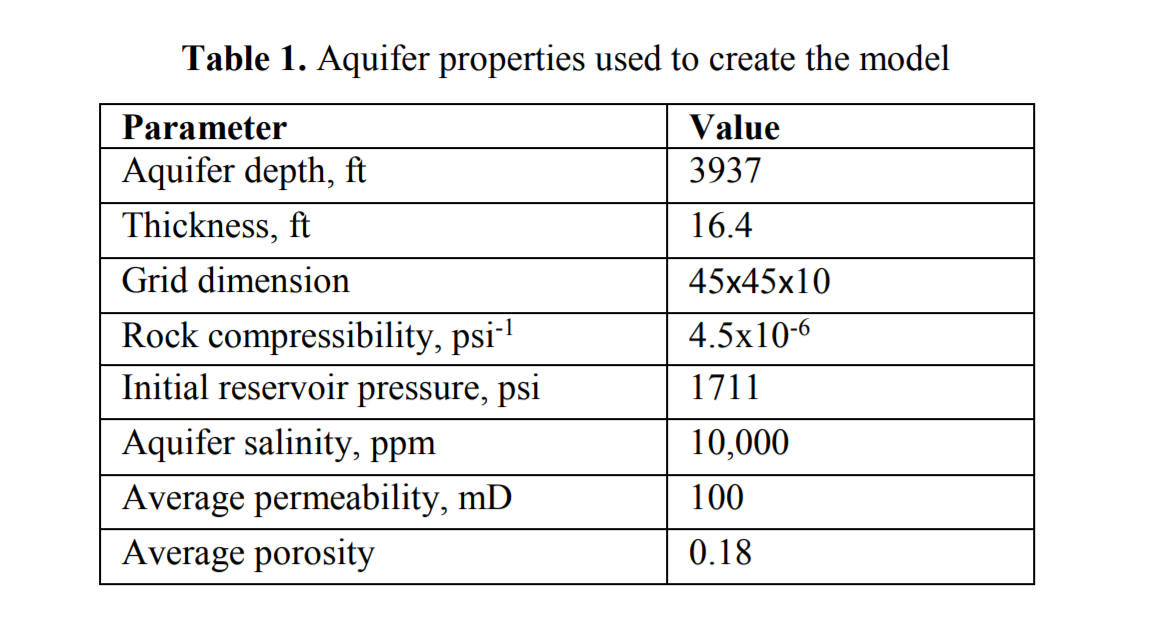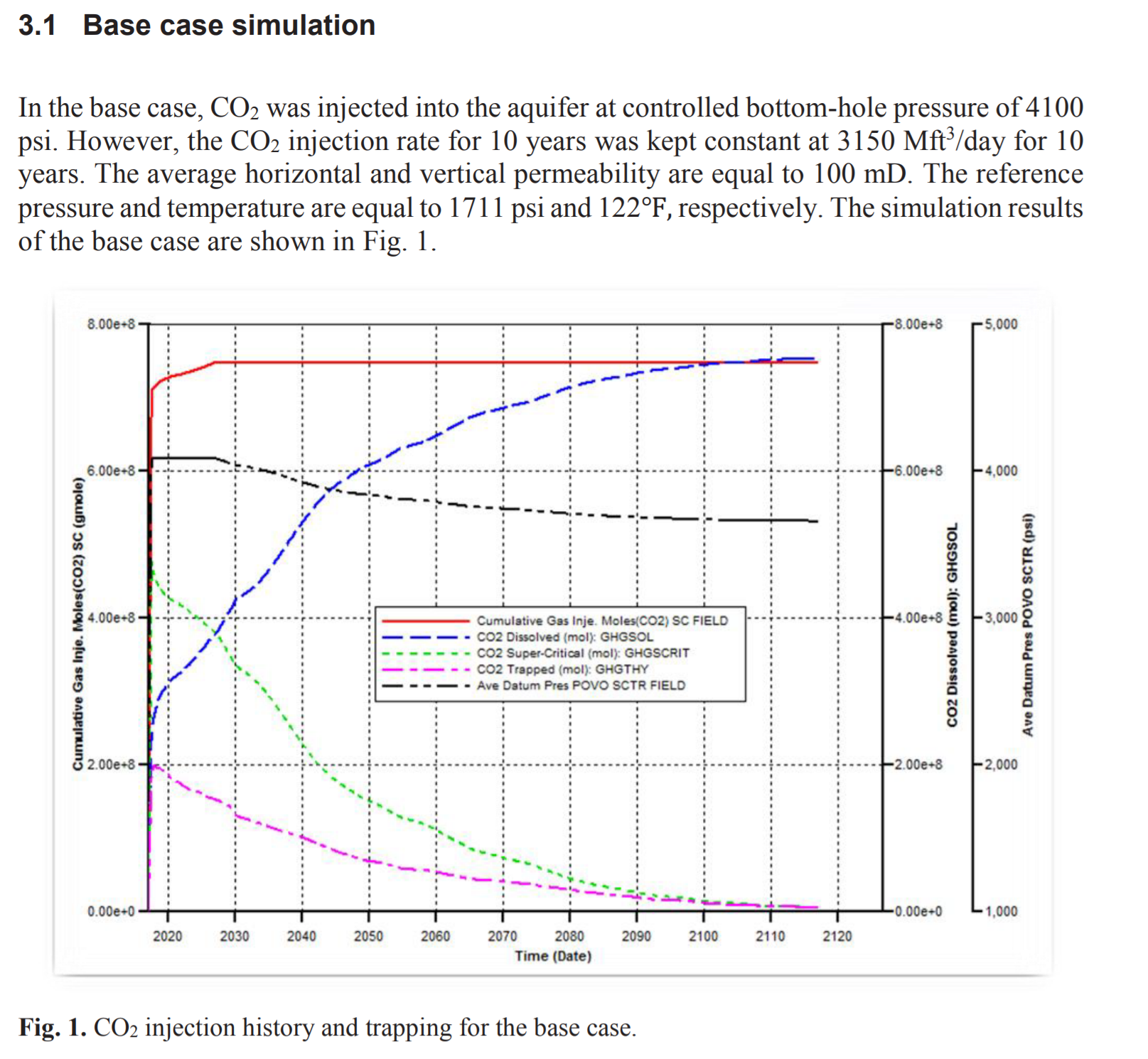A simulation study on CO2 sequestration in saline aquifers: Trapping mechanisms and risk of CO2 leakage
Abstract.
Carbon dioxide (CO2) is one of the main greenhouse gases that its high concentration in the atmosphere has caused the global warming issue. Sequestering CO2 in a suitable geological subsurface formation can be a feasible method to reduce the CO2 concentration in the atmosphere. CO2 sequestration in saline aquifers can store a significant volume of CO2 underground for thousand years. However, injecting CO2 into such formations does not guarantee a safe storage because CO2 could leak back to surface or contaminate the formation water. Hence, a proper evaluation of the sequestration site is required. In this study, a case study regarding CO2 sequestration in saline aquifers was conducted using CMG-GEM compositional simulator to study the effects of aquifer permeability, injection pressure and well trajectory on CO2 trapping mechanisms during sequestration process. A field-scale model with one injector well in which CO2 was injected into the aquifer for ten years and simulated for hundred years was studied. The results showed that, CO2 solubility trapping is the dominant mechanism with less risk of leakage when the aquifer has a good vertical permeability and the injection pressure is not high regardless of the well trajectory.
马来西亚石油科技大学



